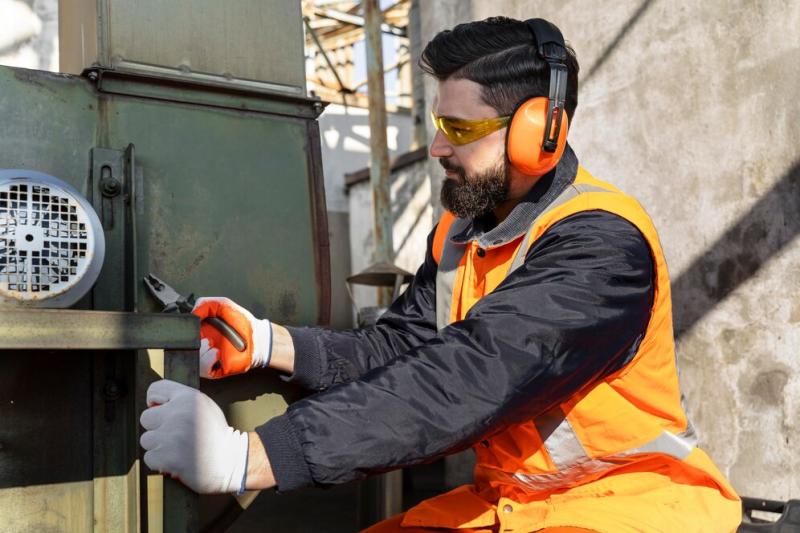How to Remove Sludge from Central Heating: A Comprehensive Guide

Sludge buildup in radiators can be a major cause of inefficiency in your central heating system. Over time, sludge in radiator leads to blockages, cold spots, and an increase in energy consumption. If you're experiencing issues such as uneven heating, strange noises from the boiler, or a rise in your energy bills, the likely culprit is sludge buildup. In this article, we’ll explore radiators sludge removal how to, effective cleaning methods, and costs associated with radiator sludge removal.
What is Sludge in Radiators?
The sludge in radiators is formed from a mixture of rust, dirt, and other debris that circulates through your central heating system. This debris collects at the bottom of radiators, forming a thick, dark sludge that prevents hot water from flowing freely. If left unchecked, this can result in cold spots on the radiator, inefficient heating, and even system breakdowns.
To keep your heating system running efficiently, it's essential to perform regular radiator sludge cleaning. This not only improves the lifespan of your heating system but also reduces energy costs.
Signs of Sludge in Your Central Heating System
Before you proceed with cleaning radiator sludge, it's important to identify the warning signs that sludge may be building up in your system. These symptoms include:
Cold spots on the radiator: If the top part of the radiator is warm but the bottom remains cold, it’s likely due to a sludge buildup.
Noisy boiler: Gurgling or banging sounds from your boiler indicate that air or sludge is causing blockages in the system.
Increased heating bills: Sludge reduces the efficiency of your heating system, causing your boiler to work harder, which increases energy consumption.
Discolored water when bleeding the radiators: When bleeding a radiator, if the water appears dark and murky, it's a sign of sludge accumulation.
If you notice any of these signs, it's time to take action and clean radiator sludge from your system.
How to Remove Sludge from Central Heating
There are several methods available for how to remove sludge from central heating. Depending on the severity of the sludge buildup, you may opt for DIY solutions or seek professional services like Powerflush Services to thoroughly clean your system. Below are the most effective ways to tackle radiator sludge removal.
1. Bleeding Radiators
Bleeding radiators is the simplest step you can take if you suspect that there's sludge in radiator systems. This process removes trapped air but doesn't deal with the underlying sludge problem.
Here’s how to do it:
Turn off your heating system and allow the radiators to cool.
Use a radiator key to open the valve and let out any trapped air.
If the water that comes out is dark or dirty, it’s a sign of sludge.
2. Using a Central Heating Sludge Remover
For moderate sludge buildup, adding a central heating sludge remover is a common and effective solution. A sludge remover is a chemical solution designed to break down and disperse the sludge that accumulates within radiators and pipes.
Here’s how to use a sludge remover:
Add the chemical sludge remover to your central heating system through the radiator or feed tank.
Let the solution circulate through the system for several hours or days, depending on the product's instructions.
After the sludge has been broken down, drain the system and refill it with clean water.
This method can help with cleaning radiator sludge without needing a full system flush, but it may not be as thorough as a power flush.
3. Manually Flushing Radiators
Another DIY approach to radiator sludge cleaning is to manually flush individual radiators. Here’s a step-by-step guide:
Turn off the heating system and allow the radiators to cool.
Place containers or towels under the radiator valves to catch water.
Open the valves and drain the radiator.
Disconnect the radiator from the wall and take it outside.
Flush the radiator with a garden hose to remove the sludge.
Reconnect the radiator, fill it with water, and turn the system back on.
While this method helps to remove sludge, it’s a time-consuming process and may not clean the entire central heating system. For thorough cleaning, a power flush is recommended.
4. Power Flushing
A power flush is the most effective solution for removing sludge from central heating systems. A power flush involves forcing water mixed with powerful cleaning chemicals through the entire system at high pressure to dislodge and remove sludge, rust, and debris from radiators, pipes, and the boiler.
A professional service, like Powerflush Services, can carry out a power flush radiator treatment, ensuring that your entire heating system is thoroughly cleaned. Power flushing is the best option if your system has extensive sludge buildup and you want long-lasting results.
Radiator Sludge Removal Cost
The radiator sludge removal cost will vary depending on the size of your system, the extent of the sludge buildup, and the method of cleaning chosen. Here’s a rough guide:
Chemical sludge remover: Adding a chemical central heating sludge remover typically costs between £100 and £200.
Manual radiator flush: This DIY method is relatively low cost, but if you hire a professional, expect to pay around £50 to £100 per radiator.
Power flush: The cost of a professional power flush radiator service ranges from £300 to £800, depending on the size of the system and the number of radiators.
Although a power radiator flush may seem expensive, it’s a worthwhile investment to prevent costly repairs and improve system efficiency.
Preventing Sludge Build-Up
Once you've successfully removed sludge from your central heating system, it's essential to take steps to prevent future build-up. Here are a few tips:
Install a magnetic filter: A magnetic filter traps metal particles and prevents them from circulating in your system, reducing sludge formation.
Use inhibitors: Add a corrosion inhibitor to your system after a flush to prevent rust and other debris from forming.
Schedule regular maintenance: Professional inspections and regular maintenance will help keep your heating system sludge-free.
Why You Should Hire Professionals for Radiator Sludge Cleaning
While some methods of cleaning radiator sludge can be done as a DIY project, nothing compares to the thoroughness of professional services. A company like Powerflush Services uses specialized equipment and expertise to clean your entire system effectively.
Here are the benefits of hiring professionals for your radiator sludge cleaner needs:
Thorough cleaning: Professionals will clean the entire system, including radiators, pipes, and the boiler, ensuring no part of your system is left untreated.
Equipment: Experts use high-pressure equipment to dislodge even the toughest sludge deposits.
Peace of mind: Hiring professionals ensures the job is done right, preventing potential future issues and costly repairs.
Conclusion
Dealing with sludge in radiator systems is crucial for maintaining an efficient and long-lasting heating system. Whether you choose DIY methods or hire professionals for a power radiator flush, addressing sludge buildup can lead to significant energy savings, improved heating performance, and a longer lifespan for your boiler and radiators.
For a thorough and effective cleaning process, consider hiring Powerflush Services, where trained professionals can ensure your system remains in peak condition, free from sludge and blockages.




Comments